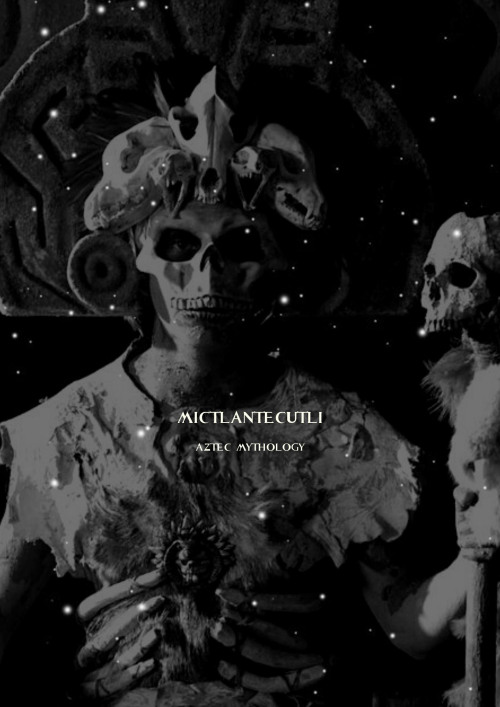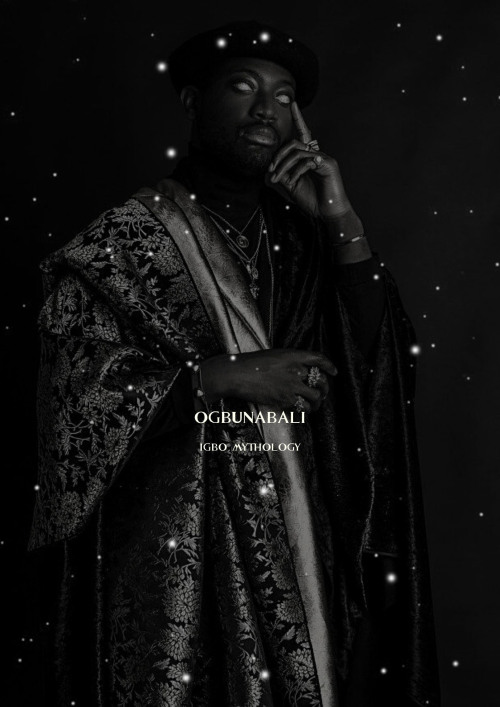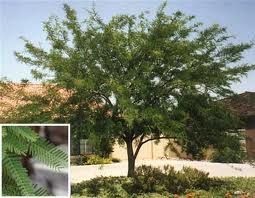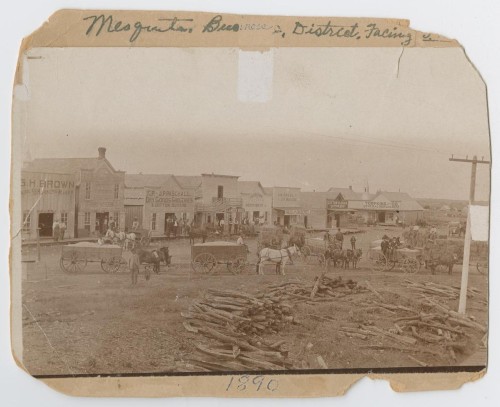Write Your Witchcraft
Write your Witchcraft

The thing is, we change. We are not the same person we were five years ago. Hel, a lot of us are not even the same people we were last week. We change, and our beliefs, favourites, thoughts and the way we see ourselves changes with it.
The same is true for our witchraft, religion and spiritual beliefs. This is why I have a list of question that I like to answer for myself every couple of years. I first started this when I came across a list of questions by Juniper from Walking the Hedge (site no longer in use) in 2008, yes, over ten years ago. Every few years I filled in the questions and looked back at the answers I gave before. Some never changed, some changed quite a lot.
When our coven started a new lesson plan, I gave out the list of questions as well. We sealed our answers in envelopes and plan to fill them in again, once we finish our lessons. Then open the envelopes and look at the answers side by side. To see how we have changed.
I looked at the list last week and found it actually lacking a bit. The questions were very deity- and spiritual based, so I was missing some more questions about my personality and witchcraft. So I decided to make my own list of questions!
Since I wanted to make this more a weekly journaling/grimoire prompt for myself I put together 52 questions. These can be answered weekly (maybe every year) or you can work through the list in one go and repeat that every few years or so.
Some notes on the wording: I consider myself both a witch and a pagan, but to keep it easier to read I only used wording like “witch” and “witchcraft”, they can however be substituted for “pagan”, “paganism” or even “my path”, should that fit you better. When I talk about “sacred space” this can both mean a ritual space like a temple or casting of a circle, but also just your home or outdoors witchy environment.
I’d love it if you would tag anything you feel comfortable with posting online with the tag #writeyourwitchcraft!
What draws me to witchcraft?
How do I see the divine?
What in witchcraft makes me happy?
Do I want to follow a path that has to do with a little nature, or a lot of nature?
What areas of witchcraft would I like to learn more about?
Where do my witchy talents lie?
What kind of deities, if any, do I want to honor?
How do I believe magic works?
Simple or elaborate spells/rituals? Why?
What are my views on cursing/hexing?
Do I want to practice something similar to my ancestors?
What are the basic morals and ethics I feel I should live by?
What in nature am I drawn to; the ocean, animals, the trees, etc?
Which (witchy) holidays, if any, would I like to celebrate and how?
How do I believe divination works?
Would I like to work with a group some of the time, all of the time or not at all?
Which aspects of witchcraft appeal to me most, which the least?
What do I believe happens to us when we die?
How do I see mythological creatures?
When do I feel most magical?
How much is witchcraft woven into my daily life; is this too much, too little or just enough?
What kind of witch do I feel I am?
Which texts/quotes best describe my current path?
Do I like research and gathering info, or do I like things handed to me?
Which things about witchcraft worry or scare me?
What is my favourite element?
How do I see gender (roles) in witchcraft?
Am I interested more in magic, or spirituality?
Do I like to be told how to do things, or would I rather figure it out on my own?
What rules, if any, do I live by when it comes to witchcraft and magic?
What do I gain from witchcraft and magic?
Formal or informal rituals/spells? Why?
What subject do I love to study?
What is my favourite type of magic; candle, sympathetic, sigils, etc?
What would my perfect witchy day be like?
Would I want to be dedicated/initiated?
Who do I honor (ex: deities, ancestors, myself, etc), and how do I, or would I like to, honor them?
How do I create a sacred/witchy space?
What do I believe is needed for a succesful spell/ritual?
Which cultures do I draw from in my witchcraft?
What is my learning style; books, websites, videos, more hands-on?
What, if anything, in my mundane life influences my witchcraft?
What are my hobbys, how do I (or can I) incorporate them in my witchcraft?
Where do my non-witchy talents lie, how do I (or can I) incorporate them in my witchcraft?
What would my dream witchy life look like? What steps can I take to work towards it?
What would my dream sacred space/witchy home look like? What steps can I take to work towards it?
What symbols correspond with me; runes, animals, flowers, gemstones, etc?
Am I an open and proud witch, or do I (need to) hide my craft?
What are my favourite witchy items/tools; divination tool, ritual tool, décor, clothing, etc?
What is holding me back in my craft?
What is my pre-spell/ritual routine?
What are my ultimate witchy goals and how can I work towards them?
More Posts from Spellbound-savvie and Others










mythologies → death deities









dark, sharp, and dangerous at every size
{dark academia women}
Mesquite: The Tree of Life of the South West

"I could ask for no better monument over my grave than a good mesquite tree, its roots down deep like those of peace who belong to the soil, its hardy branches, leaves, and fruit holding memories of the soil..." J. Frank Dobie, Texas Writer
Overview
The name mesquite derives from the Hispansized word 'mizquitl'.
There are more than 40 species of mesquite trees found worldwide, at least 90 percent of which grow in Latin America, principally Argentina and Chile. Although mesquite also thrives in other arid regions such as those in Southwest North America, Africa, the Middle East, Tunisia, Algeria, India, Pakistan, Afghanistan, Burma, Hawaii, West Indies, Russia, Puerto Rico, and Australia.
The tree itself comes in a variety of sizes depending on rain fall. Locations with higher rain fall note mesquite trees ranging from 40-50ft in height with a spread of nearly 40 feet or more. The branches are sparsely covered in thin feathery leaves with 2inch thorns growing at the base of the leaf joints.
This blog will mostly focus on Latin America; specifically in the Southwest Us and Texas.
There are seven varieties that cover one-third of the state of Texas or 56 million of the 167.5 million acres of land from the Rio Grande to the Panhandle, across central and north Texas and into much of west texas. Of all the US states 76 percent of mesquite wood grows in Texas. Mesquite grows in all regions of the state except the deep East Piney Woods.
Out of the seven varieties, the post will mostly reference Prosopis glandulosa var. glandulosa a.k.a "Honey Mesquite".

Map of the American South West and Latin america showing the range of Mesquite tree growth.
Native Tribes: Resource and Myth

Description reads: Salt River Reservation, Pima Agency Arizona, two Maricopa men(sitting) and Mojave Man in full aboriginal dress. 1880
Mesquite was such an omnipresent and nutritious resource and a central part of life itself that many tribes such as the Walapai, Apache, Papago, and Maricopa honored mesquite within their language and mythology.
Mesquite beans were the food staples for many of the South West Native American tribes. Through out the United states they gathered millions of pounds annually. In cases of food shortages, mesquite beans were often the only food source.
Much of the plant material such as fiber, thorns, sap, and roots were used in the making of many goods. The fibers were used for making of textiles and baskets. The
The creation myth of the Maricopa states that the Maricopa, Pima, and Yavapai -after death of their maker- scattered over the land and gathered mesquite beans. An Apache myth recounts how the sun and moon consulted with one another and formed the mesquite tree then hung beans upon its branches. The death of the Coyote myth of the Pima tells of Mesquite surviving the Great Flood and of how the coyote ate so many beans that they swelled in his stomach.
The Mesquite was an extremely important resource and was used frequently as an amenity of trade between the Apache tribe and the Pima tribe. When food plants failed during time of drought the Pima would travel long expeditions to trade goods with the Apache for beans and bean flour. With it, the Pima made dough and cooked it as round cakes. Certain tribes such as Pima and Opata also fermented bean flour water creating a bean beer called Atole and has a mildly intoxicating quality.
The gum, or sap, of the tree was used as adhesive to mend broken pottery as well as dye clay before the heating process. The gum when mixed with mud was used in several tribes spiritual and courtship rituals.
Both leaves and gum of the Mesquite is known by the tribes to carry healing powers and medicinal properties.
The Yaqui community in particular honor mesquite as one of two plants to have supernatural powers beyond most other plants. However of the two, only Mesquite grows in the sacred territory of the Yaqui and is said to have powers to detect and vanquish witchcraft especially if the wood is cut into a shape of a cross. One Yaqui myth tells of a "talking stick" made from mesquite wood which foretold death to all people baptized as christian.
Anglo-Texan History

Image of Mesquite Texas, 1890 showing piles of mesquite branches and horse drawn wagons containing grain or beans.
Historians believed that the mesquite was orginally limited to extreme South Texas and spread north only after the Civil War when cattle drives became frequent. Cattle would eat mesquite beans when grass was not plentiful.
Early Texas settlers facored the mesquite wood because not only was it plentiful but it also resisted rotting. Before commercial barbed wire came to texas in the 1870s, ranchers built sturdy corrals from mesquite-log picket fences. Travelers also fashioned hubs for wagons, wagon spokes, and small boat ribs from mesquite.
During the civil war, when coffee was scarce, Texans made ersatz coffee from roasted and ground mesquite beans. Honey made from mesquite flowers was especially prized. In the absence of pins, settlers substituted mesquite thorns.
In the 1869 Dr. John E. Park of Sequin patented under the no. 51,407 on December 5 for the use of mesquite bark in tanning leather. In the article from 1870 Texas Almanac, he included information on the superiority of the use of Mesquite in tanning leather. For, mesquite was found to be richest in Tannic Acid (a substance used for tanning) and worked exceptionally faster than previous methods because the acid penetrated the hide faster. Fast enough to seldom lose hide to decomposition. This allowed for tanning to be done in summer months, a process usually done in winter.
Medicinal Uses
*Note: not a replacement for modern day regulated medications and treatments.*
Aztecs made a lotion from ground mesquite leaves to treat sore eyes.
The Yuma tribe treated venereal diseases with an infusion of leaves and sap.
Comanches chewed on leaves to relieve toothaches.
The Yaqui Tribe treated headaches with a poultice made from mashing leaves to a pulp, mixing with water, and binding the mixture to the forehead.
The light-amber gum or sap that oozed from mesauite bark was mixed with water and gargled to treat sore throats, or swallowed to treat diarrhea, aid in digestion, and help wounds heal.
The Yavapai rubbed a mixture of mud and mesquite gum into their hair to simultaneously dye it and treat lice.
Modern Uses
Although ranchers still try to annihilate mesquite due to injury of livestock and cowhands, a dedicated group of texans cant get enough of it. They are mostly artisans who value mesquite for its beauty, the ease with which it can be worked, and the high sheen of finished pieces. Some even prize its irregularities.
Mesquite has a swirling grain, radial cracks, mineral deposits in the bark, and often many insect holes. Mesquite is dimensionally stable: as most hardwoods dry they shrink more in one direction than they do the other while mesquite shrinks the same percentage in both directions. It has a surface hardness of 2,336 pounds per squared inch, equal to that of hickory and almost twice that of oak and maple; and a density of 45 pounds per foot greater than oak, maple, pecan, and hickory.
Modern Spiritual interpertations:
Harmonizing qualities
Accessing the willingness to cross the wasteland of "dark night of the soul" to find deep spiritual richness within yourself and others
Comfortably connecting with others from a place of compassion and warmth
Standing inside a circle of love
Self blessing
Forgiveness
Possible use for Mesquite in imbalances
Emotional remoteness
Aloofness
Allowing others to see a coolness that actually covers an inner warmth
Feeling as is there is a barren wasteland or spiritual desolation within self.
Feeling separated and remote from others or self.
Personal Suggestion on craft Use*
*Disclaimer: subject to error and not a replacement for actual medications; allergy notice: mesquite is part of the legume family. Research trees and plants in area before ingesting random plants. Watch out for use of pesticides in public places. I do Not recommend diy fermentation. I do not support appropriating native tribes' traditions and rites unless explicitly permitted to by said tribe, do NOT trespass on Sacred Lands for resources it may be possible to purchase sacred mesquite from the tribes. Do Not vandalize sacred grounds or public trees. BE RESPECTFUL.*
Mesquite is tasty. Use wood for rich Smokey flavor on barbequed meats and vegtables.
Make tea from leaves
The beans are said to taste sweet and contain 30 percent sugar trace. Eat beans raw, roasted, dried, or ground into a flour.
Use water diluted sap to treat rashes. (Unless allergic.)
Use diluted sap in hair as you would oils.
Burn leaves and wood to smoke cleanse.
Hang mesquite cross to avert hexes or harmful craft.
I recommend buying from South Western Tribes and other mesquite artisans for bobbles and other wooden figures. Otherwise, source your mesquite in an earth friendly manner by sustainable means and only take what you need.
Information Sources:
"The Magnificent Mesquite" book by Ken E. Rogers
Texasalmanac.com
Desert-alchemy.com
Local Texans
Picture Sources: Google and pinterest
Grounding & Centering

In my practice grounding and centering have been valuable tools to working magic and managing my energy and emotions. Centering is important to put you in the correct mind frame to perform spells and grounding aligns your energy with that of the Earth.
For some, grounding and centering may be separate practices. However, in my practice they are one combined process. Some form of grounding and centering is often present in meditation, martial arts, and psychology. I personally use it to bring my awareness back to reality when I am feeling anxious or dissociating.
The technique I use to ground and center is visualization. This involves using your mind to imagine things that are not normally visible. If you feel this process worsens your distress from psychosis, this method may not be for you.
To begin grounding and centering, you can sit, stand, or lay, however feels comfortable to you. Some of the resting yoga positions can be beneficial for this. I recommend closing your eyes but it is not necessary if that feels uncomfortable for you.
First, we center. Visualize your energy pooling within your body. What color is it? Pay attention to how far your energy extends. Is it within your body or does it radiate outwards? Extend your awareness to the bounds of your energy. Imagine that energy contracting and forming a sphere within your body.
Next, to ground, extend your awareness to the energy of the Earth. It can help if you are outside or on a ground floor but you can just as easily ground in an apartment building or high rise. Visualize waves of energy radiating from the center of the Earth. Allow them to pass through you. Begin shaping that energy towards you. Visualize your energy and the Earth’s energy combining. Maybe a beam of light connects your orb to the Earth.
While doing all of this you should focus on breathing. If breathing deeply is uncomfortable for you, just breathe normally. But it is important to stay aware of your breath. This can also keep you focused.
If you find your attention drifting, just guide it back gently. The first handful of times you ground and center you may have difficulty keeping your attention. This is okay, it will get easier the more your practice. Forgive yourself for getting distracted and bring yourself back to the task at hand.
After this process, you may feel more connected to the Earth or you may feel energy surging within you. You might feel a bit warm. Or maybe you will feel none of these things. It can be a different process for everyone. We all respond to magical energy differently. Note how you feel.
You should now be prepared to do spellwork. Remember, that this can take practice.
Let me know about your experience or if you have any other tips for beginners!
(image from pixabay)
I have one brain cell and it bounces around in my skull like a windows screen saver
Thrifty Witch Thursdays: Hagstones

Whilst focusing on hagstones I wanted this to be a reminder that witchcraft is whatever you have and whatever you can find. Go back to nature, you find a twig or stone you like? Pick it up, thank your deity for the gift and take it home.
Hagstones/Odin Stones/Seers Stones are stones which naturally have holes in them due to being worn by water, whether that’s the sea or a rolling river.
There are many myths around these stones and I invite you to find your own which you like. Some say if you look through the stones you will see the fae world and be able to see through glamours. Others say you will see a person’s true self.
If you write a wish on a piece of paper and put it through the hole it could come true.
They are linked to Odin, by resembling the hole he had to bore through the mountain to reach the sacred mead.
I found these stones in Portsmouth, UK, and I was lucky to find quite a few as it was a fairly pebbly beach. If you’re lucky to live near a pebbly beach I think you’ll find a few too. Otherwise they can be quite rare. If you really wish for one and keep your eye out you’ll sure to come across one!
(Please don’t buy these for extortionate prices online, I understand you may not have the ability to find them due to where you live but I’d hate to see anyone get ripped off for our craft. I have a few, if you’d absolutely love one I will be happy to send you one.)



Rαʂɱσԃιυʂ
Keep reading


by lana gramlich
Mushroom Rules and Taboos
Mushroom season is in full swing! There are a few topics one should always avoid when talking with mushroom hunters. I’m a moderator on a mushroom identification group of about 30,000 people, and if you start talking about one of these topics, your post or comment will be deleted! Here are a few rules one should follow when talking with fellow mushroom hunters (and yes, I know these sound like a cross between Karen complaints and fae rules).
1. Never ask for someone’s mushrooms spot. Asking for someone’s mushroom spot is tantamount to declaring you’re going to steal all of their mushrooms and leave them with nothing but severed stipes! This is very rude and hurtful. If you really need a hint as to where to find certain species, instead ask something like, “at what elevation in what mountain range did you find these?” That will allow the forager to give you a general answer, and won’t force them to give up their secrets. A kind forager will respond to, “Where is your mushroom spot?” with something like, “400m, Cascade foothills.” A less forgiving forager might stuff a wad of moss down your throat.
2. Do not argue about or even mention “cut versus pluck.” Whether you cut a mushroom from the ground with a knife or pluck it with your fingers has no significant effect whatsoever on the health of the mushroom population or how many mushrooms will come up the next year. There is a common misconception that cutting mushrooms with a knife is less damaging, but this is untrue. Cutting and plucking both don’t cause any harm! You’re just removing a fruiting body, and the real body of the mushroom is formed by mycelia underground. People feel really strongly about cut versus pluck, even if they know the different methods have no real effect on the fungi. Some people prefer to cut so others know they were there, or to keep their baskets clean, while others prefer to pluck to leave less visible debris in the forest, or to take more edible fungus. Either way: it should never be brought up. It’s a bannable offense in some groups - think, “We! Do not! Talk! About! The! Orangutan!”
3. Do not scold people for picking mushrooms they do not know the species of. This is called “pick shaming” in mushroom hunter communities. Sometimes, well-meaning folks will scold people for picking mushrooms they don’t know because they think it’s “wasteful” to pick a mushroom if they do not intend to eat it. This comes from a good place, since they’re obviously environmentally-conscious, but it also shows that they don’t know much about fungi. They are not plants! Revisit point 2: picking or cutting mushrooms has no effect whatsoever on the health of the fungus. More importantly, a lot of mushrooms need spore prints and a view of the entire specimen, from the base to the top of the pileus, to properly identify. In fact, to identify many toxic Amanita species, you must look at the volva at the base of the stipe, which requires pulling out the entire specimen. New foragers should indeed pick mushrooms to identify them - this is how they should learn.
4. This is more of a pet peeve, but: do not ask “is this edible?” or “is this magic?” before you know what mushroom species you’re working with. Few things irritate me and other mushroom experts as much as seeing a picture of a toxic mushroom with the question, “Edible?” but no request for id. There are three reasons for this: First, I don’t want to be responsible for whether you eat a mushroom and get sick from it. I can tell you what I think it is, and there’s a 99.99% chance I’m correct, but if I’m either wrong or you have a particular sensitivity to that species (and many people do to common species like Laetiporus conifericola), I don’t want to get the blame for “telling you it was fine to eat.” Many mushroom hunters make a point of giving only the identification and letting the requester research edibility on their own for this reason. Second, me telling you if something is edible is not helping you learn to identify or hunt mushrooms, it’s just giving you a cheap way to repeatedly stick Agaricus foundinmyyardicus on the forum and have someone else id it for you. Third, and more importantly, why are you putting things in your mouth if you don’t know what they are? WHY?! What is wrong with you?! Mushroom maggots are also edible, but you would not eat them!
5. Do not make unverified claims of mushroom medicinal use or, worse, offer medical advice unless you’re a trained and licensed professional. You can say, “There are some studies I found in this peer reviewed journal that indicate Trametes versicolor might be promising for such-and-such use,” but do not say stuff like, “Turkey tails cure cancer!” or, “Susan, I hear you had the flu. You should drink Ganoderma oregonense tea to boost your immune system!” Don’t risk poisoning someone, messing with their medication, or spreading pseudoscience by suggesting they use a mushroom for medicinal purposes unless you’re a trained medical professional. A forager who has casually read some journal articles is not a trained medical professional!
6. Don’t mock folks for asking for confirmation of an “easy to identify” mushroom species. You’d be surprised by how many people misidentify species that are as “easy” to identify as Cantharellus formosus. I would much rather forty people post chanterelles and one accidentally post Hygrophoropsis aurantiaca while asking for confirmation than forty one people blindly eat their mushroom haul, thinking they’re chanterelles, only for one to get sick on Hygrophoropsis aurantiaca. Be responsible, and remember you were a beginner once, too.
7. In identification groups, don’t give a definite identification unless you’re 100% sure of the mushroom someone is asking for an id of. If you’re unsure, say something like, “Looks like Laccaria bicolor,” or, “Compare to Amanita augusta.” Don’t say, “That’s Xerocomellus zelleri” with certainty unless you’re willing to bet on your mother’s life it’s Xerocomellus zelleri. This usually isn’t a big deal, but there was a bit of a kerfuffle on one of the mushroom forums a few years back when someone said, “That’s a matsutake!” about a deadly Amanita smithiana, and then proceeded to argue with David Arora, a legend among mycologists and the author of identification books like Mushrooms Demystified and All that the Rain Promises and More, upon being corrected.
8. When identifying mushrooms, always use scientific names. Common names are colorful and easy to remember, but different species might have the same common name, or other people might be unfamiliar with the common name you’re using. Some species don’t even have common names! It’s totally okay to give both a scientific name and a common name, though, if the common name exists.
-
 basshynico liked this · 1 month ago
basshynico liked this · 1 month ago -
 tenuous-grace reblogged this · 1 month ago
tenuous-grace reblogged this · 1 month ago -
 smallme liked this · 4 months ago
smallme liked this · 4 months ago -
 radiantraven7 liked this · 5 months ago
radiantraven7 liked this · 5 months ago -
 disabledbisexualfroggy liked this · 5 months ago
disabledbisexualfroggy liked this · 5 months ago -
 persephonestyle liked this · 5 months ago
persephonestyle liked this · 5 months ago -
 runes-and-bones reblogged this · 5 months ago
runes-and-bones reblogged this · 5 months ago -
 licncourt-replies liked this · 5 months ago
licncourt-replies liked this · 5 months ago -
 nefarious-virgo liked this · 7 months ago
nefarious-virgo liked this · 7 months ago -
 tree-obsession liked this · 8 months ago
tree-obsession liked this · 8 months ago -
 catharsismask reblogged this · 9 months ago
catharsismask reblogged this · 9 months ago -
 graveyard-gorl liked this · 9 months ago
graveyard-gorl liked this · 9 months ago -
 mawaru-kagami liked this · 10 months ago
mawaru-kagami liked this · 10 months ago -
 grimrosegirl liked this · 10 months ago
grimrosegirl liked this · 10 months ago -
 astrape-the-weatherwitch liked this · 11 months ago
astrape-the-weatherwitch liked this · 11 months ago -
 kxrmatic liked this · 11 months ago
kxrmatic liked this · 11 months ago -
 ravenpine reblogged this · 1 year ago
ravenpine reblogged this · 1 year ago -
 lettuce-lag liked this · 1 year ago
lettuce-lag liked this · 1 year ago -
 whateverz-2009 liked this · 1 year ago
whateverz-2009 liked this · 1 year ago -
 nomdelune reblogged this · 1 year ago
nomdelune reblogged this · 1 year ago -
 nnietoperkka liked this · 1 year ago
nnietoperkka liked this · 1 year ago -
 jill-the-witch reblogged this · 1 year ago
jill-the-witch reblogged this · 1 year ago -
 themysticsub reblogged this · 1 year ago
themysticsub reblogged this · 1 year ago -
 thebronxchick liked this · 1 year ago
thebronxchick liked this · 1 year ago -
 scribletspibs liked this · 1 year ago
scribletspibs liked this · 1 year ago -
 bloodmoondiaries reblogged this · 1 year ago
bloodmoondiaries reblogged this · 1 year ago -
 bloodmoondiaries liked this · 1 year ago
bloodmoondiaries liked this · 1 year ago -
 motherwytch reblogged this · 1 year ago
motherwytch reblogged this · 1 year ago -
 faelynin liked this · 1 year ago
faelynin liked this · 1 year ago -
 mommybookwyrm liked this · 1 year ago
mommybookwyrm liked this · 1 year ago -
 madman-in-the-ocean liked this · 1 year ago
madman-in-the-ocean liked this · 1 year ago -
 faceinthesunlight reblogged this · 1 year ago
faceinthesunlight reblogged this · 1 year ago -
 menageriesunicorn liked this · 1 year ago
menageriesunicorn liked this · 1 year ago -
 webspelunker liked this · 1 year ago
webspelunker liked this · 1 year ago -
 amethyst-vvitch reblogged this · 1 year ago
amethyst-vvitch reblogged this · 1 year ago -
 miameirohara reblogged this · 1 year ago
miameirohara reblogged this · 1 year ago -
 cherubchemurgist reblogged this · 1 year ago
cherubchemurgist reblogged this · 1 year ago -
 mygendertodayis liked this · 1 year ago
mygendertodayis liked this · 1 year ago -
 drripley liked this · 1 year ago
drripley liked this · 1 year ago -
 witchescollection reblogged this · 1 year ago
witchescollection reblogged this · 1 year ago -
 bluedoveyellowsun liked this · 1 year ago
bluedoveyellowsun liked this · 1 year ago

she/hereclectic witchcrafttaurus sun / aquarius moon / aquarius risingmother of two
456 posts